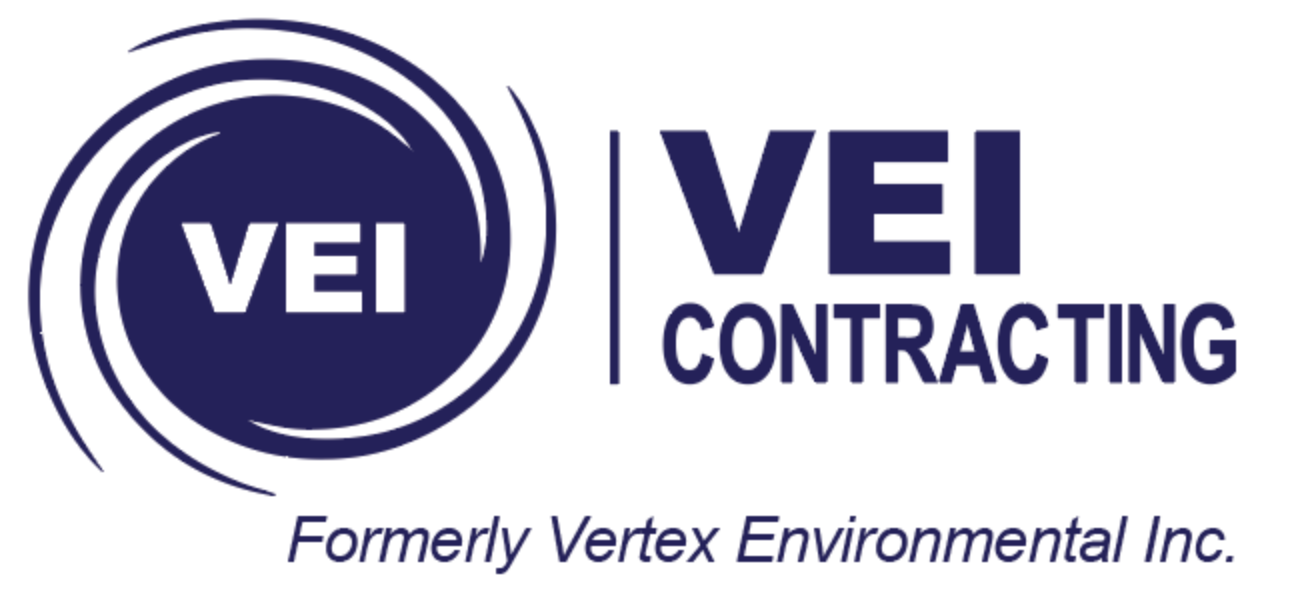Canadian Know-How Helps Move Remediation Projects Ahead All Winter Long
As Canadians, we love to talk about the weather. It changes dramatically across the seasons and directly impacts our work and play time. Three feet of blowing snow may tend to force us indoors for Netflix marathons. But work still calls.
It has been estimated that 50% of all construction activities are sensitive to weather conditions.
But as Canadians, we’ve also learned to adapt. Check out this prediction from way back in 1960:
“Canadians have, however, become so accustomed to winter construction activity that there is every indication that it will eventually equal in volume the work carried out in summer.”
National Research Council, 1960
And this fact:
“From 1987 to 2003 the variation in seasonal employment in construction industries in Canada has decreased by 36%.”
Statistics Canada, Labour Force Survey data
It seems we have a history of striving to spread our workload evenly throughout the year by increasing capabilities and improving efficiencies in winter work.
Yet typically in the environmental industry, fall remains the busiest time of year, with a slow-down in the winter, followed by a ramp up in the spring.
Remediation work can be more challenging in the winter, but with the right experience and proper planning and tools it can be done very efficiently.
Here’s a case study from the Vertex Vault: Two years ago we conducted large scale injections of oxidants solutions in remote Northern Saskatchewan in February.
Chemical and biological processes are temperature dependent. Contaminant degradation reactions happen faster at warmer temperatures and slower when it’s colder. But contaminated soil and groundwater treatment conducted more than 1.5 m below ground does not slow down during the long Canadian winter due to the relatively consistent ground temperature below the frost line. At depths relevant for subsurface remediation projects, at least in the more southern latitudes of Canada, the soil temperature remains around 10ºC during all seasons.
As a result of the consistent temperature profile, chemical and biological treatment processes essentially continue on at the same rate year round. (Be sure to read: “Why The Center of the Earth is Still So Hot”).
So contaminant degradation reactions will proceed in the subsurface – IF we can set the stage properly. This usually involves delivering amendments to the impacted zones in the form of water based solutions or slurries. Mobilizing the equipment and then preventing freeze-up during operations are the key winter challenges. Vertex has spent many hours over the years ever improving our ability to perform remediation work in the winter. Specialized heat sources, insulated equipment and customized injection solutions have all been developed to make these otherwise challenging projects routine.
Below we share a photo log of some of the more “interesting” projects where we’ve had to manage everything winter can throw at us.
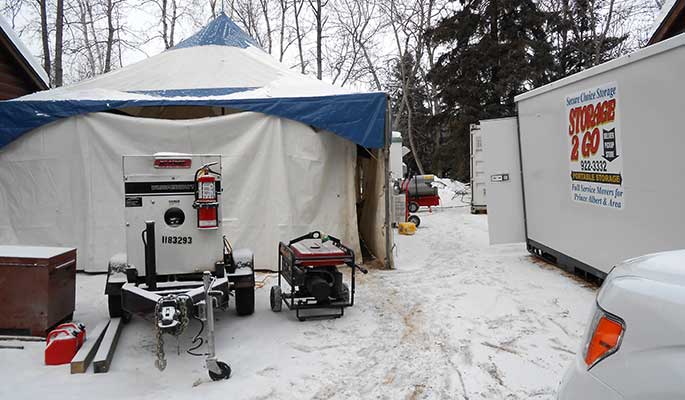
Mobile Work Station: Protection from Temperatures of
-20ºC to -30ºC and as Cold as -50ºC With Wind Chill
(Rocky Mountain House, Alberta)
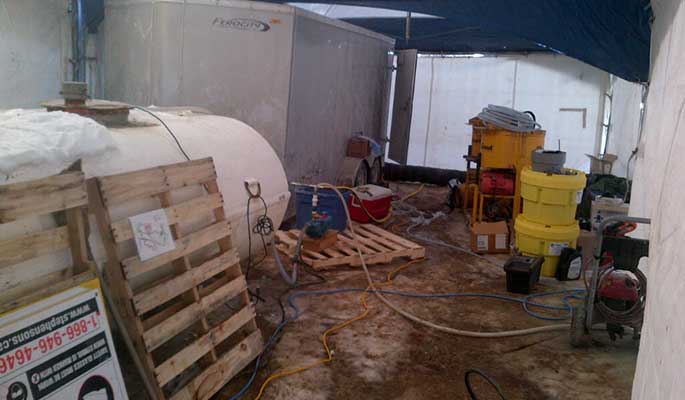
Mobile Work Station
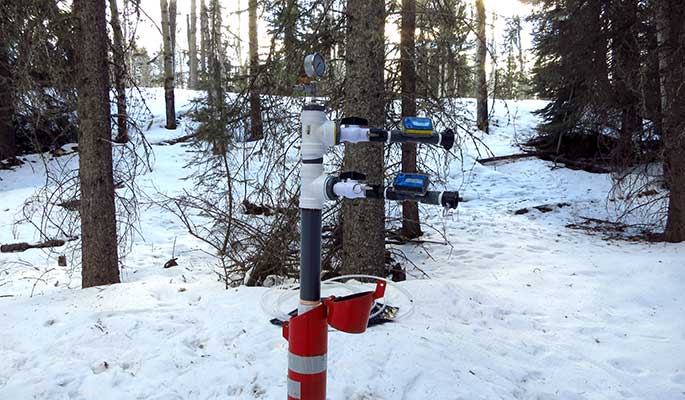
Injection Well to Treat Petroleum in Groundwater at a Remote Site;
(Rocky Mountain House, Alberta)
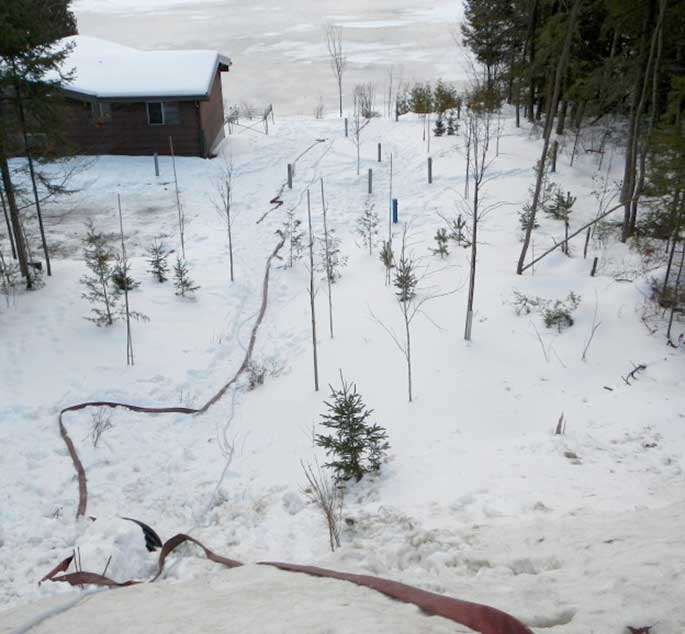
Winter Injections to Protect a Lake from a Formaldehyde Spill
(Northern Ontario)
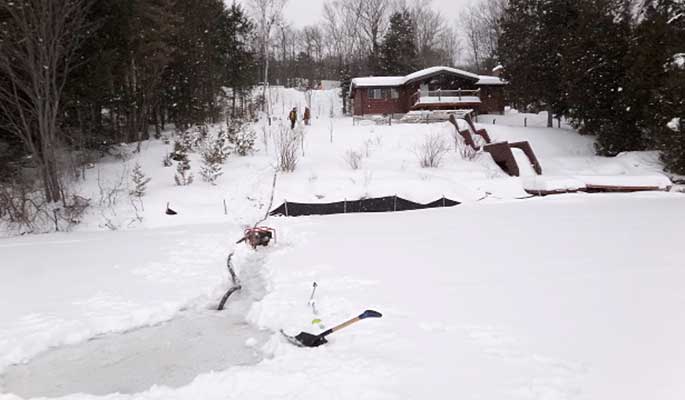
Hole Cut Through Ice Provides Winter Water Source
(Northern Ontario)
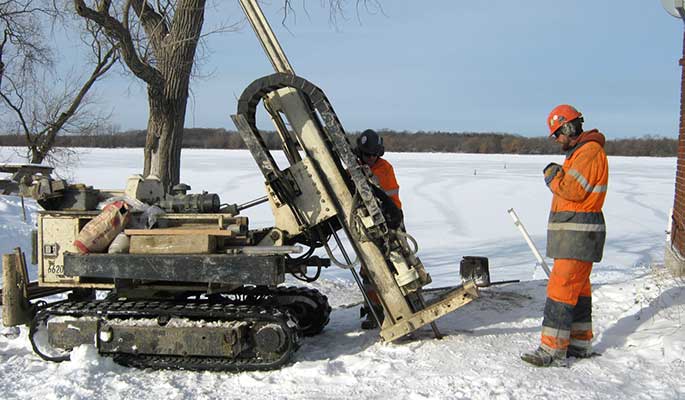
Advancing a Temporary Injection Point Beside a Residential Heating Oil Leak
(Eastern Ontario)
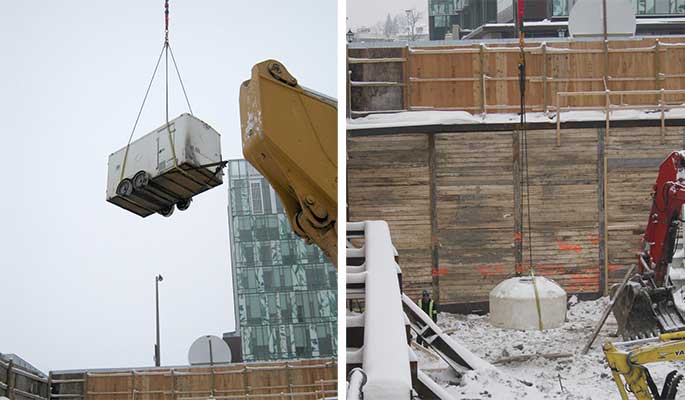
A Crane Places Our Injection Equipment Inside A Deep Excavation; Groundwater Treatment Helps to Keep Construction Schedule on Target Through the Dead of Winter
(South Western Ontario)
Hopefully these pictures have helped paint a picture of the remediation work that is possible during the harsh winter months, even at remote locations. If you have a challenging project you are considering delaying until spring, why not give Bruce a call: (519) 653-8444 x 304
Together we might be able to develop some Canadian ingenuity to move up your work schedule.
